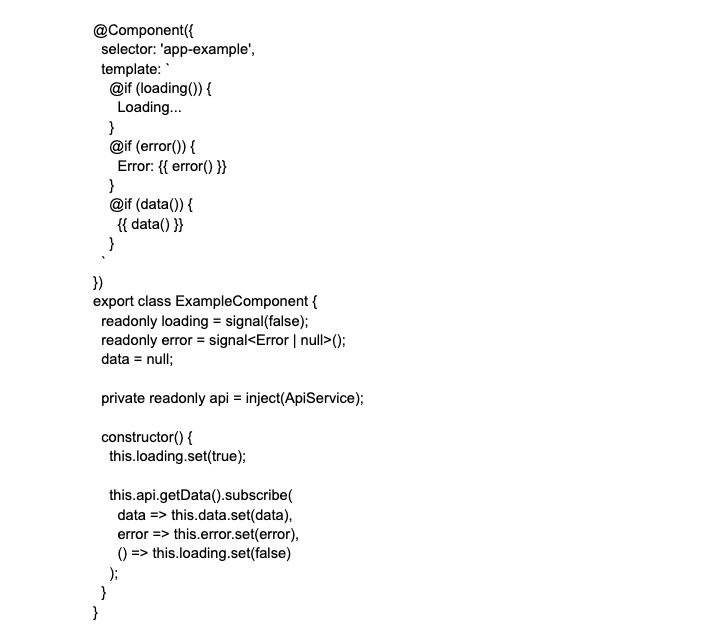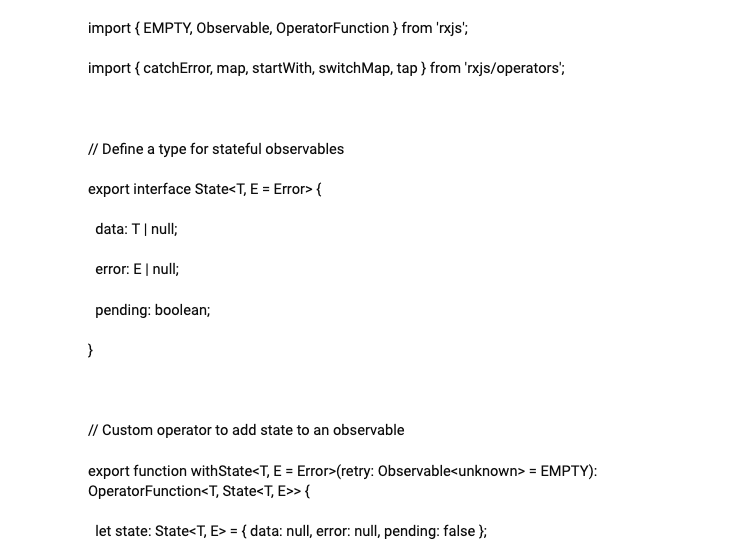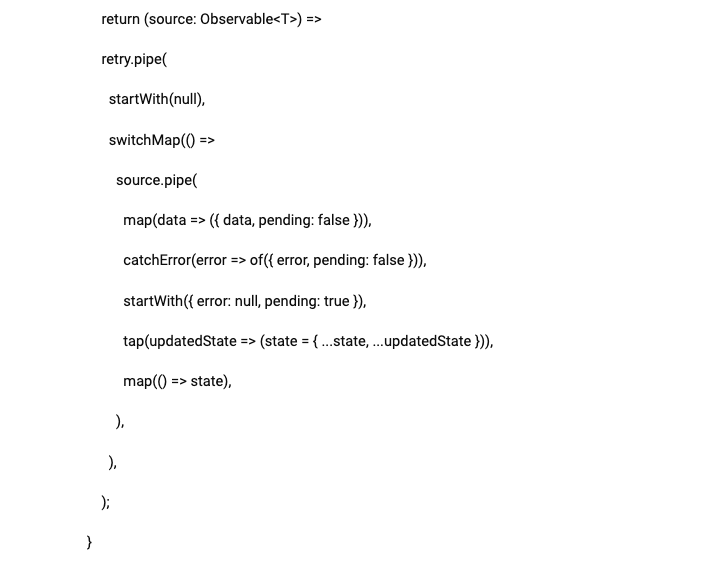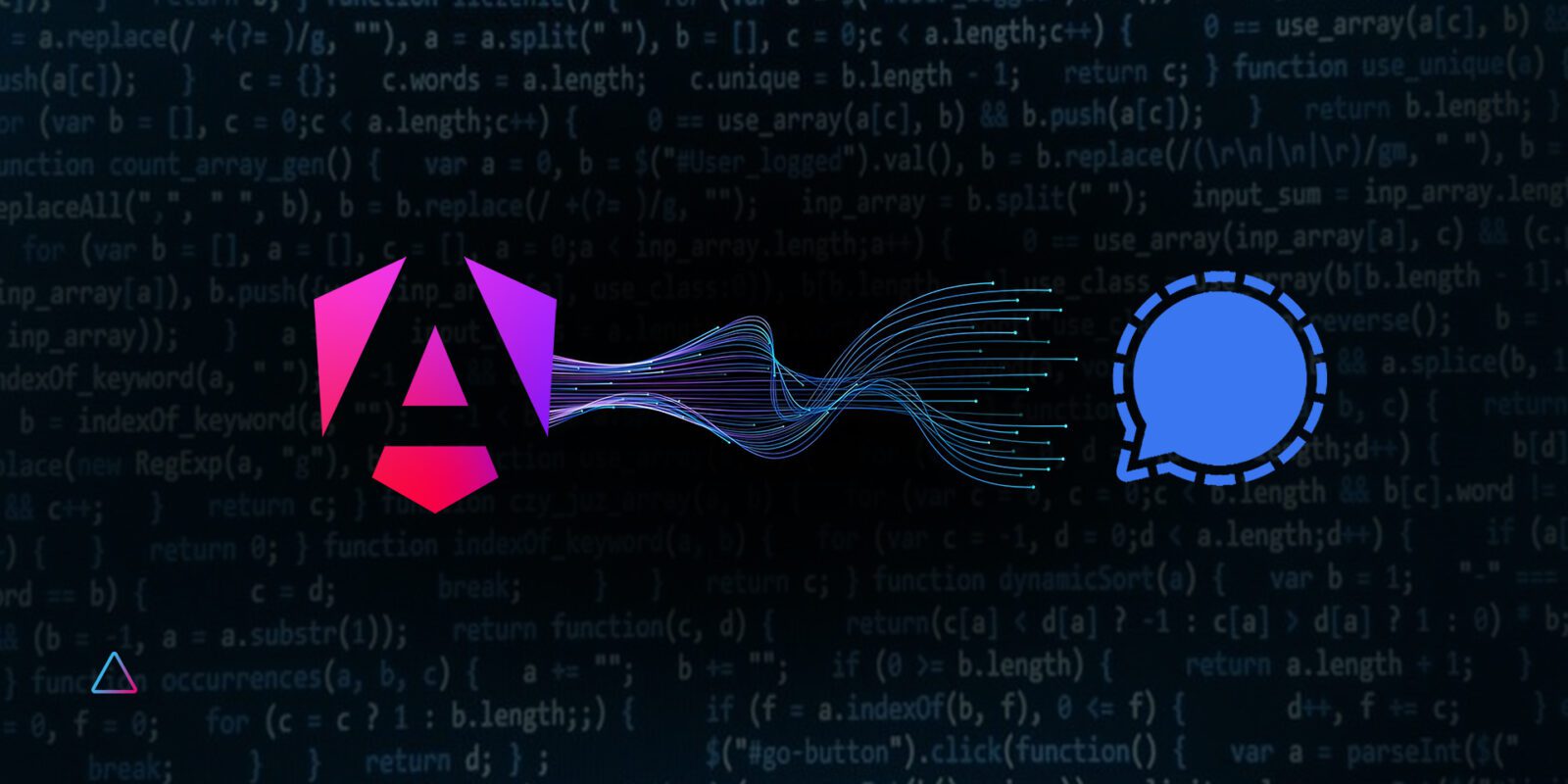Managing the state of components is a common challenge for frontend developers. This often includes scenarios like displaying a preloader during asynchronous actions or showing an error message upon their failure.
In this article, we will explore several strategies for managing component states effectively using Angular and the innovative Signal API.
Understanding State in Angular Components
In many Angular applications, the state of an API request is often stored in a component variable to manage various UI states. For instance:

While this approach is functional, it might not always be optimal. Instead of coupling state management to component variables, we could derive state directly from the requests themselves. This should be particularly useful in scenarios where different component states do not necessarily correlate, such as simultaneous data loading and API updates.
Handling Asynchronous Actions
1. Streaming Data
For data that is frequently updated (like those fetched with GET requests), Angular’s observables are the ideal choice. This is because observables are cancelable and cancelling an obsolete GET request can save our backend resources.
In addition we could enhance these observables by using a custom operator that appends state information to the data stream:


This stateful operator wraps an observable to manage data reloads effectively, this way we can maintain the previous state until new data is fully loaded.
Here is how you can use it:

2. Action-Based Data Changes
For actions like POST, PUT, or DELETE, where a distinct start and end state are essential, managing state through an Observable may not be optimal. Because even if we cancel the previous request, it’s possible that the record has already been deleted, modified, or added to the database. Instead, creating a stateful function using promises and the Signal API is more suited:

This technique allows components to initiate asynchronous actions while being able to display state updates directly within the component template.
Here is how you can use it:

Conclusion
The methods discussed provide a robust framework for managing component states in Angular applications. These techniques simplify state management and enhance the responsiveness and clarity of the user interface. While we’ve focused on specific instances, the principles can be applied to broader scenarios, potentially involving services or local storage.
For a practical demonstration, you can view these examples in action on StackBlitz:
Stateful Observable Example
[Stateful Function Example](https://stackblitz.com/edit/stateful-fn?embed=1&file=src%2F

